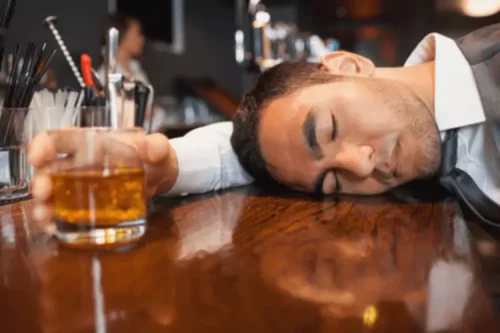
Alcohol and tranquilizers produce the most dangerous physical withdrawal. Suddenly stopping alcohol or tranquilizers can lead to seizures, strokes, or heart attacks in high-risk patients. A medically supervised detox can minimize withdrawal symptoms and reduce the risk of dangerous complications.

The Importance of Long-Term Support After Cocaine Detox
Long-term alcohol use can also harm personal relationships, employment, and financial circumstances. If you or someone you love is struggling with addiction, getting help is just a phone call away, or consider trying therapy online with BetterHelp. Ethanol is the key ingredient in many alcoholic beverages, such as beer, wine, and spirits. As a depressant, alcohol can suppress the central nervous system (CNS), making the body reliant on it with prolonged exposure. It does this by reducing the excitatory portion of the CNS called the glutamate receptors while increasing the inhibitory portion called the gamma-aminobutyric acid receptors.
What Is Alcohol Detox?

When the seizure begins during the aura stage, it may be called a partial seizure or a simple focal seizure. If it comes with warning signs, you could experience deja vu, intense anxiety, muscle twitches, loss of bowel or bladder control, numbness or tingling, nausea, and confusion. However, if you’re experiencing some of these symptoms, it could also mean you are about to experience a potential symptom that is particular to alcohol withdrawal called delirium tremens. However, alcohol, along with other depressants, is among the most dangerous substances during the withdrawal phase, especially if you quit cold turkey. The overstimulating effects of alcohol withdrawal can lead to increased blood pressure, heart palpitations, sleeplessness, fever, hallucinations, panic, and seizures. What causes alcohol withdrawal seizures, are there any warning signs, and how can alcohol dependence be treated safely.
- During initial treatment, a person may receive a higher dosage of benzodiazepines to reduce symptoms and the urge to drink alcohol.
- After merely one week of abstaining from alcohol, numerous individuals report significant enhancements like enhanced mental clarity and a decrease in mental fogginess.
- While it can be safe to go through alcohol withdrawal at home, it’s not recommended because of the risks and potential intensity of symptoms.
- The alcohol detox phase can involve alcohol withdrawal timeline symptoms ranging from mild intensity to life-threatening.
Treatment Options

Although uncommon, the most severe effect of alcohol withdrawal is delirium tremens. It can start within two to five days after your last drink and can be life-threatening. However, less than five percent of people will develop delirium tremens when quitting drinking. According to the National Institute of Health 1, alcohol dependence is among the most common psychiatric disorders, second to major depression. Approximately 14% of the general population has a lifetime history of alcohol dependence. Alcohol Withdrawal Syndrome (AWS) is one of the most common presentations of Alcohol Dependence Syndrome.
- Wet brain is a term used to describe severe brain damage caused by excessive alcohol consumption.
- Giving way to psychological disruptions, including anxiety and depression.
- For example, benzodiazepines such as Ativan, Librium, and Valium can help reduce symptoms of agitation and anxiety, and muscle tremors.
- Alcohol withdrawal seizures are not just a symptom of quitting drinking — they’re a loud, urgent alarm bell that your body is in distress and needs help.
- These medications work by stabilizing the brain’s electrical activity, preventing the sudden surges that cause seizures.
When alcohol use is stopped suddenly, the body, which has developed a dependency on alcohol to maintain normal functioning, experiences a state of shock. The Recovery Village Baptist Health specializes in compassionate, evidence-based care tailored to your needs. Whether you’re seeking help for yourself or a loved one, we’re here to guide you every step of the way. Symptoms should be largely resolved by day seven, except in alcohol withdrawal seizure extreme situations. Psychological symptoms like cravings may become more noticeable as physical symptoms subside. Only mild symptoms should be present by this point, with all symptoms gradually subsiding in intensity.
Alcoholism: Top 10 Health Questions Answered

Ways to treat alcohol withdrawal include medical detox, partial hospitalization programs, and intensive outpatient programs, based on symptom severity. Alcohol withdrawal refers to Halfway house the physical and psychological symptoms that occur when a dependent individual reduces or stops alcohol consumption after prolonged heavy use. Enrolling in treatment programs is always recommended, especially for anyone who is at a higher risk of alcoholic seizures. Detox programs and inpatient facilities can give you medical supervision, which is very important during the early stages of recovery. These programs can also provide tools to manage your cravings and triggers. Preventing a future alcohol withdrawal seizure starts by first making some important lifestyle changes and getting the right support.
- The symptoms of alcohol withdrawal include anxiety, tremors, sweating, nausea, and elevated heart rate, which appear within 6–24 hours after the last drink.
- During the critical timeframe of 24 to 72 hours following an individual’s final drink, they are likely to encounter the zenith of withdrawal symptoms.
- CIWA scoring has several drawbacks, and generally isn’t very useful (especially within a critical care arena, which is staffed by experienced nurses).
